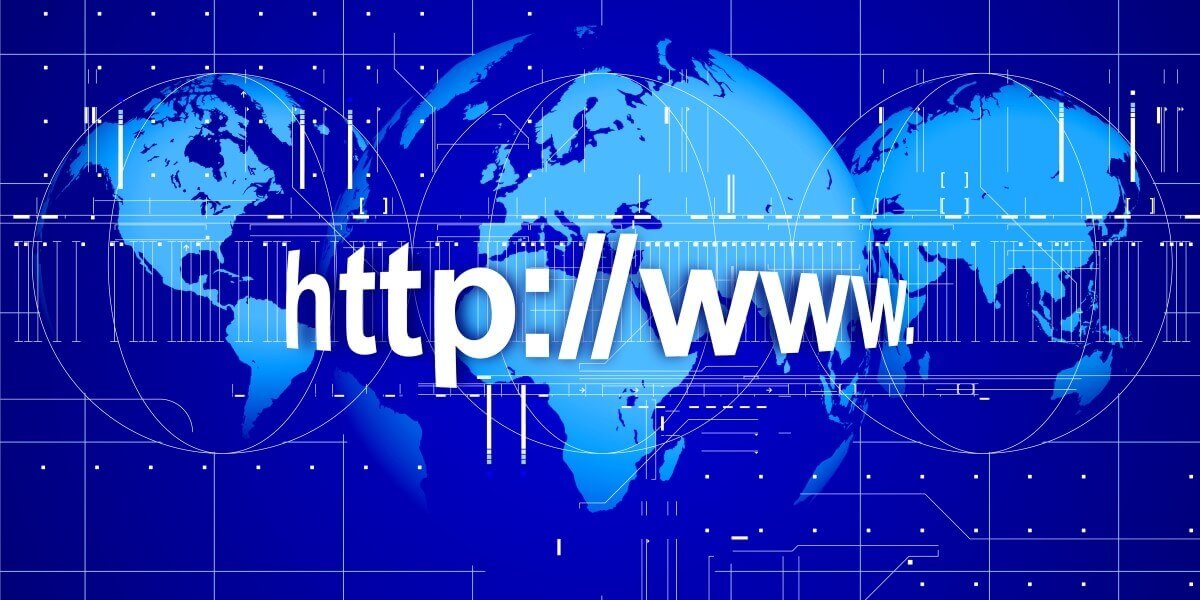Lower your internet bill
Enter your zip code to find the best deals & promos in your area.
1 Star is Poor & 5 Stars is Excellent.
* Required

Written by Rosslyn Elliott - Pub. Jan 29, 2024 / Updated Jan 31, 2024
Table of Contents
Are you happy with your Internet service?

About the author
Want to know who invented the internet? Or when DSL was hot? Check out our handy timeline of internet history for a quick review.
Who: Bell Labs
Where: United States
Why It Mattered: The first commercial communications satellite, Telstar 1, laid the foundation for satellite internet access. Satellite internet is still the only form of internet available to large areas of the earth. It is crucial for digital opportunity, national defense, and military operations.
Who: U.S. Department of Defense, Leonard Kleinrock, Paul Baran, Donald Davies
Where: University of California, Los Angeles (UCLA) and other U.S. research institutes
Why It Mattered: Teams across the country plan and start ARPANET. The project represents the beginning of a global network fostering collaboration and information exchange. Donald Davies coins the word “packet” to describe a unit of data. The first host-to-host connection happens from UCLA to the Stanford Research Institute on October 29, 1969 [1].
Who: Ray Tomlinson
Where: ARPANET
Why It Mattered: Email became a cornerstone of internet communication, revolutionizing personal and professional correspondence. In addition to inventing the first email app, Ray Tomlinson created the @symbol as the hallmark of an email address [2].

1978
First spam email
Who: Charles Dolan, Gerald Levin (Sterling Manhattan Cable)
Where: United States
Why It Mattered: In 1972, the launch of the first pay-TV network, Home Box Office (HBO), contributed to the later development of cable internet access. Though cable TV was first invented in the 1950s, it had reached 25% of American households in 1981 and 90% by 2010 [3]. The widespread installation of coaxial cable prepared the way for today’s most common high-speed internet: cable internet.
Who: Gary Thuerk
Where: ARPANET
Why It Mattered: Spam email marked the beginning of online advertising and raised issues about internet security [4].
Who: Nippon Telegraph and Telephone
Where: Tokyo, Japan
Why It Mattered: 1G became the first generational mobile network in the world. 1G made its debut to the citizens of Tokyo, marking the beginning of mobile telecommunication [5].
Who: Symbolics, Inc.
Where: Cambridge, Massachusetts
Why It Mattered: Symbolics registered the URL “Symbolics.com” as the first business to use the dot-com extension [6]. This innovation reflected the first gestures toward commercialization of the internet, paving the way for online businesses.
Who: AT&T Bell Labs
Where: United States
Why It Mattered: DSL technology was patented, revolutionizing high-speed internet connections through phone lines [7]. DSL was ten times faster than the painfully flow dial-up internet that came before it. Two years after the original patent, Joseph W. Lechleider invented the concept of aDSL (asymmetrical DSL) which was crucial to those increased speeds.

1989
Who: Tim Berners-Lee
Where: CERN, Switzerland
Why It Mattered: The World Wide Web made the internet user-friendly, facilitating the creation and sharing of information globally [8]. Tim Berns-Lee deployed three technologies that enabled the web: HTML, URL, and HTTP.
Who: Alan Emtage
Where: McGill University, Canada
Why It Mattered: Alan Emtage invented the first search engine, which he named ARCHIE [9]. Search engines revolutionized information retrieval, making the internet more accessible and organized.
Who: University of Cambridge
Where: United Kingdom
Why It Mattered: The camera monitoring the office coffee pot started as a joke at the University of Cambridge. But soon after this primitive webcam was hooked up, scientists figured out how to extend the webcam concept and bring it to consumers [10]. Webcams laid the foundation for online video communication and content sharing.
Who: Six Degrees, Friendster
Where: United States
Why It Mattered: In 1997, Six Degrees became the first social media network [11]. By people across the world the ability to communicate easily with text and images, social media transformed communication. Whether or not the effects of social media on human society will be a net positive is still unclear.

1997
Social media
emerges
Who: International Telecommunication Union (ITU)
Where: Global
Why It Mattered: The first commercial 3G networks were introduced in mid-2001, representing a major leap forward in mobile communication technologies [12]. 3G allowed access to wireless internet by smart phones, which began to change life around the world. Constant internet access became an earthshaking influence on every aspect of daily life.
Who: Apple, Inc.
Where: Cupertino, California
Why It Mattered: Though 3G launched in 2001, it wasn’t until 2007 that the tech world saw another invention that would change history. When Apple introduced the first iPhone, people truly began to be connected at all times [13]. Other phone companies followed, but it was the iPhone that changed everything. Mobile internet made online information and communication accessible on the go, changing the way we interact with the internet
Who: Ericsson, Nokia, Huawei
Where: Stockholm and Oslo
Why It Mattered: Ericsson and Nokia, in collaboration with TeliaSonera, debuted the world’s first publicly available 4G LTE service in Stockholm and Oslo in 2009 [14]. TeliaSonera placed the first order for LTE with Ericsson, marking a significant milestone in the evolution of wireless communication. 4G LTE made mobile internet much faster, which increased the public demand for 24/7 mobile internet access.

2010
Fiber internet transforms connectivity
What Happened: In 2010, the internet landscape changed with the introduction of fiber internet to the home (FTTH) [15]. Google Fiber led the way, but other companies followed as demand rose for faster, more reliable internet.
Why It Mattered: The deployment of fiber-optic networks revolutionized internet connectivity by offering unparalleled speed, reliability, and an enhanced overall internet experience.
What Happened: Cloud computing services spread rapidly across global industry, revolutionizing data storage and access on the internet.
Why It Mattered: Cloud computing offers enhanced scalability, accessibility, and collaboration in online data management.
What Happened: The FCC adopted strong net neutrality rules, sparking debates and legal challenges over the regulation of internet service providers [16].
Why It Mattered: The discussions shaped the future of an open internet and the role of service providers in controlling access.
What Happened: Facebook’s Cambridge Analytica scandal unfolded [17}. Through the New York Times and the Guardian, the public discovered that Cambridge Analytica gained unauthorized access to personal information from 50 million Facebook profiles.
Why It Mattered: The scandal raised significant concerns about user data protection and privacy breaches on social media platforms.
What Happened: The General Data Protection Regulation (GDPR) came into effect in the European Union, setting strict standards for data protection and privacy [18].
Why It Mattered: The GDPR became a global benchmark for data privacy regulations, influencing policies worldwide.

2018
Internet privacy
concerns intensify
What Happened: 5G technology began rolling out globally, promising faster internet speeds and improved connectivity [19].
Why It Mattered: 5G was supposed to be a significant leap in wireless communication, improving various industries and supporting technological advances. Critics say it is too spotty thus far to have made an impact [20].
What Happened: OpenAI released ChatGPT in November 2022, creating a milestone in the emergence of generative artificial intelligence. ChatGPT is an advanced large language model (LLM) that transformed the landscape of AI-driven conversations and interactions.
Why It Mattered: ChatGPT’s launch democratized access to generative AI, making sophisticated language generation capabilities more accessible. This event triggered heated discussions and exploration in the field of generative AI as well as general AI. It also kicked off a frenzy of investment that will flood the market with AI technology.
Advocates feel that AI will enable utopian developments in medicine, education, and transportation [21]. Critics fear it will cause massive job losses, economic chaos, and social unrest [22].
Need the most advanced internet in your area? Enter your zip code to find detailed plans and pricing, or check out our resource library for help on all things internet-related.
[1] ComputerHistory.org. “Internet History: 1960s."
[2] Lemelson.MIT.edu. “Ray Tomlinson."
[3] Forbes.com. “The Rise and Fall of Cable Television."
[4] ComputerWorld.com. “Gary Thuerk: The Father of Spam."
[6] Wired.com. “Symbolics: The First Dot-Com."
[7] Wikipedia.org. “Digital Subscriber Line."
[8] WebFoundation.org. “History of the Web."
[9] Poynter.org. “The frst internet search engine."
[10] BBC.com. “How the world’s first webcam made a coffee pot famous."
[11] HistoryCooperative.org. “The History of Social Media."
[12] ITU.int. “The ITU Takes Mobile into the Third Millennium."
[13] Apple.com. “Apple Reinvents the Phone with iPhone."
[14] Wikipedia.org. “4G."
[15] Harvard Business Review. “Google Fiber is high-speed internet’s most successful failure."
[16} CRSReports.Congress.gov. “Net neutrality."
[17] BipartisanPolicy.org. “Cambridge Analytica Controversy."
[18] Trade.gov. “European Union Data Privacy and Protection."
[19] Forbes.com. “The state of 5G in 2022."
[20] NYTimes.com. “What is 5G?"
[21] A16Z.com “AI Will Save the World."
(22) Forbes.com. “The 15 biggest risks of artificial intelligence."

About the author
We cannot find results with the zip code you entered, but we can still offer you great internet deals in your neighborhood.
Click below to call for more information:
[tel]Enter your zip code to find the best deals & promos in your area.